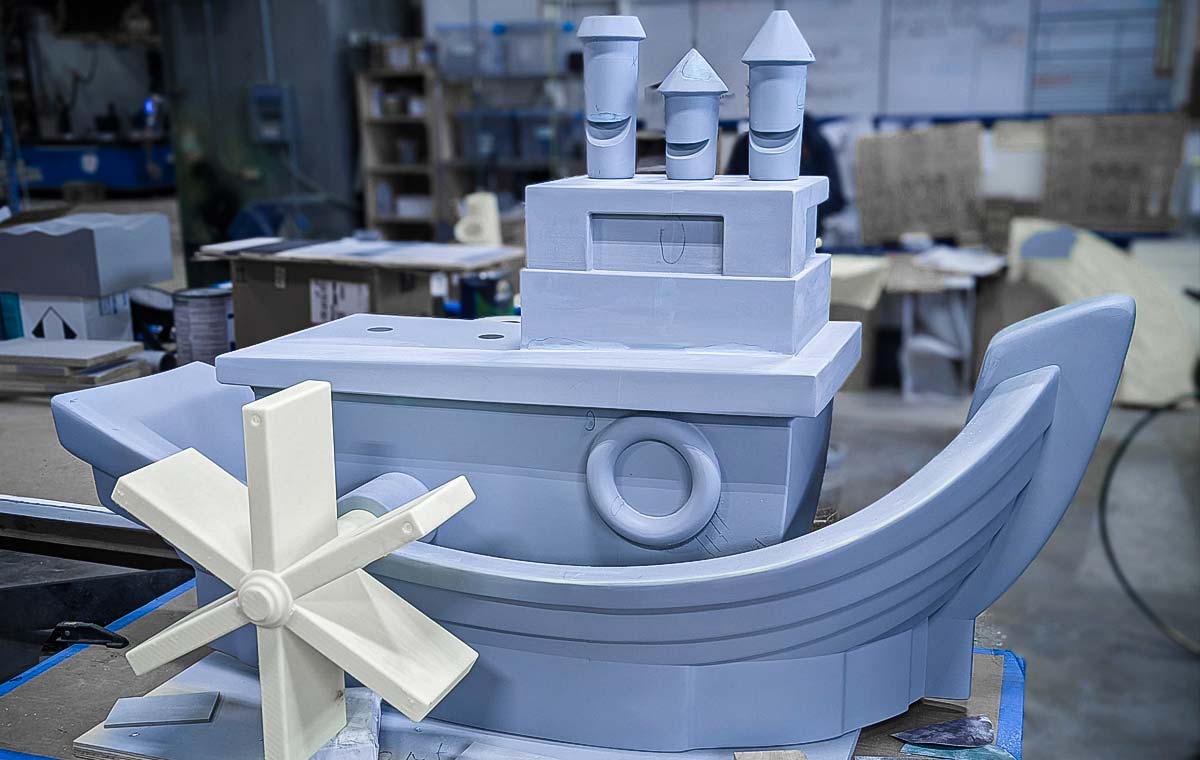When people talk about 3D printing, they are most often talking about the results. “This machine part was 3D printed,” or “You can create customized toys using a 3D printer,” even, “They’re 3D printing houses now!” But what you don’t hear as much about is the many types of 3D printers that make all these achievements possible.
There are a lot of different devices that can print in 3D, and each one has distinctive characteristics. SLA 3D printers are a 3D printing device that makes it possible to print using liquid resins for finely detailed results. What’s so special about that? Find out in this article.
What is an SLA 3D printer?
SLA 3D printers use a process called stereolithography to transform light-activated liquid resins into solid forms. Charles Hull, co-founder of 3D Systems, invented Stereolithography in 1983. Shortly after the invention of this process, which uses UV light to cure liquid resins, Hull patented a stereolithography apparatus (SLA), a machine that could be used to 3D print items using stereolithography. It is from this device that SLA 3D printers get their name.
Stereolithography and SLA 3D printers use a laser to target a focused beam of light toward a small area of liquid and solidify it. The liquid resin is contained in a vat that moves up or down depending on the printer’s design, allowing a single layer of liquid to be formed with each pass of the laser. The SLA 3D printer’s laser moves laterally, directing its light at only the selected areas. Because the process cures only designated portions of each layer of liquid, the remaining liquid is reusable.
This precision targeting capability enables fabricators to create detailed 3D printed objects with limited waste. Introducing SLA 3D printers in the 1980s represented a breakthrough for rapid industrial prototyping allowing designers and manufacturers to transform ideas from CAD files into real objects they could see and examine in days or even hours.
SLA 3D printers are available for consumer and professional use. The largest industrial SLA 3D printers can print objects with a maximum height or width of several feet.
What are light-activated resins?
Resins may be derived from natural or synthetic sources and are usually viscous at room temperature. Some resins solidify when exposed to changes in temperature while others will solidify when exposed to UV light. The types of resins used for SLA 3D printing are called photopolymers or light-activated resins. These resins are transformed chemically when exposed to light. This process is called photopolymerization or photo-curing. Since the invention of stereolithography, different resins have been developed for various uses. Other materials may be added to a photopolymer that alter its properties while retaining its light-activated qualities.

How does an SLA 3D printer build an object from a digital design file?
Creating a 3D object using a 3D printer begins with the object’s design. The designer will use computer-aided design (CAD) software to develop a model of the object they want to create. A second type of software converts that digital file into a format that directs the movements of the printer.
The files that provide these machine instructions are called computer-aided manufacturing (CAM) files. Objects printed in 3D require a special set of machine instructions. Their CAM files are made using software that slices a design into layers. With SLA 3D printers, every layer in a file translates into a laser pass required for the object to be constructed.
The number of layers a design is sliced into is determined by its size and the level of detail the design requires. Finely detailed work may require more, thinner slices than a less detailed piece. Often, the slicing software will add support structures to the 3D object’s design. These are lines of resin that will be cured along with the object, acting as a scaffolding around the piece.
How do SLA 3D printers differ from non-resin 3D printers?
SLA 3D printing uses an additive process to create an object from a liquid source material. Other 3D printing technologies use materials that are solid at room temperature and softened to a near liquid state before being shaped and placed by the printer’s nozzle or other methods. Many 3D printers use filament made from plastics or other substances as their source material, while some use powdered resins. You can learn more about different 3D printers in the article, Industrial 3D Printers: What They Do and How They Do It.
How do SLA 3D printers differ from other resin printers?
SLA 3D printing is one of two 3D printing methods that use light to cure a liquid material and solidify it. The other method, digital light processing (DLP) also uses an ultraviolet laser to cure light-sensitive resins. However, a DLP 3D printer passes the laser light through a projection screen. This screen, called a digital micromirror device (DMD) distributes and directs the light layer by layer in a single exposure in the way a flash photo exposes an entire scene to light simultaneously.
The results are sometimes not as precise as those produced by an SLA 3D printer and may also require hand finishing to achieve the desired look.
DLP 3D printers tend to produce objects quicker than SLA 3D printers because of their whole-layer curing process. When an object is printed using SLA, the post-curing time may vary depending on the size of the cured surface area. This is because the first sections of each layer will be cured sooner than the last, as the laser travels from point to point. The speed advantage of DLP printing over SLA increases as the size of the printing area becomes larger.
What types of fabrication projects are SLA 3D printers best for?
The bread and butter of SLA 3D printing is in creating prototypes. However, as machine technology and available materials advance, these printers are becoming increasingly feasible as tools for producing finished goods. A large-scale industrial SLA 3D printer can produce multiple, identical pieces accurately and rapidly.
SLA 3D printers are also excellent tools for creating negative forms or molds to use along with other fabrication tools. Artists and architects use SLA 3D printers to develop forms and finished pieces to use in installations and custom design elements. The printers are also used to create workable machine parts and even human prosthetics.
Access to 3D printers that can quickly and accurately produce an object from a design, replicate multiple pieces or reproduce a design in varying sizes opens up amazing opportunities for designers and builders to innovate and explore.
Bring your ideas to life with advanced 3D printing technology
3D printing technology allows artists, architects, product designers, and many other professionals to expand their creative capacities, test new designs, and scale and duplicate objects quickly and efficiently. SLA 3D printers facilitate this wave of creativity and production by adding speed and precision to your design tool set.
Discover how an industrial SLA 3D printer can open up new fabrication horizons for your business by scheduling a no-hassle introduction to Bridgewater Studio today.
Learn how we use 3D printing and other digital fabrication methods to create models, prototypes and final display pieces for top brands, corporate organizations, and cultural institutions around the world. Explore the possibilities for your next project and get a customized plan that sets it up for success from the start.


.png)
.png)
.png)







